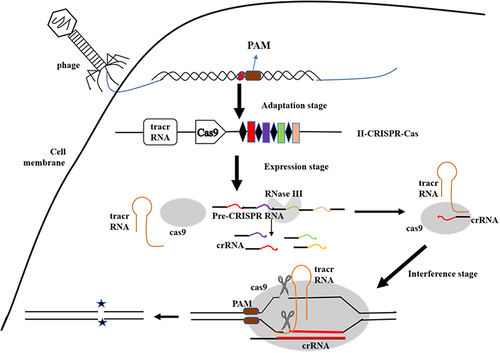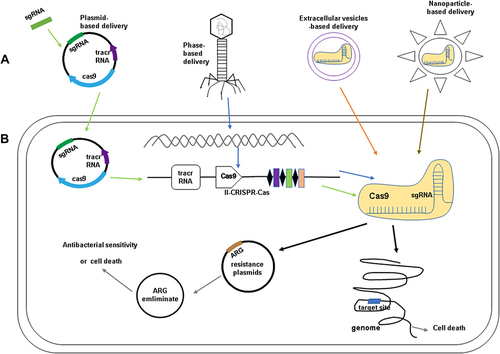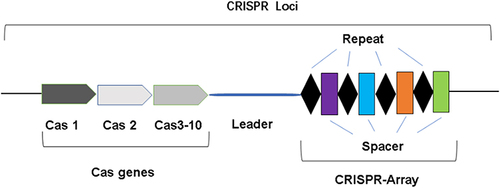Figures & data
Figure 2 The working mechanism of the CRISPR-Cas system. The bacterial defense mechanism of the CRISPR/Cas systems includes three stages: Adaptation stage: acquisition of spacer sequences; Expression stage: Generation of the crRNA and Cas protein; Interference stage: crRNA-guided nucleic acid-targeted cleavage.

Figure 3 (A) The methods for delivery of CRISPR-Cas components: plasmids-based delivery (Design and synthesize sgRNA targeting the target gene and ligate it into a plasmid vector containing Cas9); phage-based delivery (The CRISPR-Cas system was integrated into the phage genome and delivered with the phage as a vector); Extracellular vesicles(EVs)-based delivery and nanoparticle-based delivery (Cas9 protein and sgRNA form a ribonucleoprotein (RNP) complex and packaged into EVs and nanoparticles). (B) The application of CRISPR-Cas system in antibiotic resistance. When the delivery of CRISPR-Cas systems in the bacteria cells, the antibiotic-resistant genes (ARG) on the plasmids could be eliminated and the bacteria can re-sensitized against antibacterial agents. CRISPR-Cas also shows a strong bactericidal activity and make the cell die after the recognition of the target ARG on plasmid and the target site on genome.


